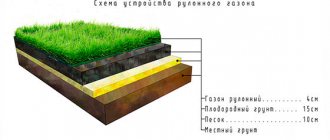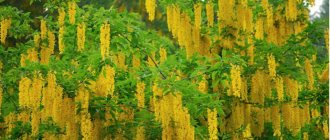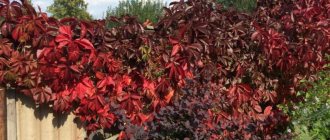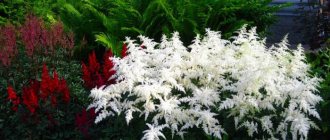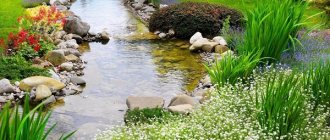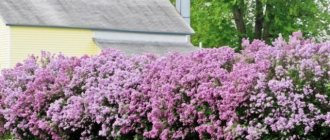Amateur and professional gardeners recognize how good hydrangea looks in garden landscape design, and the photos presented on specialized sites only confirm this. Despite its eastern origin, the birthplace of this plant is China and Japan - gardeners from Russia loved hydrangea so much that it became one of the most typical elements of a traditional Russian garden, along with shady alleys.
Currently, there are more and more people wanting to reproduce a piece of Russian antiquity on their site. And if the territory of the gardens most often does not allow for an alley, then there is always a place for hydrangeas.
Hydrangea is native to China and Japan.
Abroad, hydrangea enjoys no less love. Different types of this flower can often be seen among plants at flower shows. Less demanding varieties are actively used in park and landscape gardening, as this plant quickly recovers even after cold winters and begins flowering early.
Different types of hydrangea can often be seen among plants at flower shows.
Garden hydrangea, or hydrangea (Hydrangeahortensishort), belongs to the Saxifraga family. Active use in garden decoration began after the development of hybrid plants with large flowers.
Hydrangea belongs to the Saxifraga family
The shrub blooms from early spring and throughout the summer. It has large and dense spherical inflorescences and juicy dark green leaves located oppositely. The colors are varied: white, purple, red, hot pink. Some varieties have learned to change color over time from darker to brighter shades.
The shrub blooms from early spring and throughout the summer
If space allows, interesting decorative effects can be created using hydrangeas alone. An important point is the willingness to constantly care for the plants, since they are quite demanding on the quality of the soil.
Hydrangeas are quite demanding on soil quality.
Features of hydrangea in landscape design
Landscape designers highlight hydrangeas as one of the most valuable materials. They have a fairly compact size, are easy to shape and are able to maintain decorative qualities throughout the season. They are also distinguished by the duration and uniqueness of their flowering: the decorative properties of the plants are determined not by “real” flowers, but by large, brightly colored sepals.
Initially they have a greenish tint, which as they grow changes to white, pink, blue and other colors depending on the variety. The sepals bloom for two to three months. In the autumn, the inflorescences remain on the bush, drying out only a little before the onset of frost.
Another advantage of the plant for landscape design purposes is its high resistance to disease and pests.
How is a flower grown?
- The main advantage of hydrangea in open ground is that its color depends not on the variety, but on the soil indicator. In an acidic environment, blue and blue inflorescences are obtained, in a neutral environment - white, beige, in an alkaline environment - lilac, pink. Experienced gardeners recommend choosing the soil for each flower yourself.
- Watering should be abundant and timely.
- Garden hydrangea loves the sun, but can burn out. Therefore, choose a place so that at noon it is in slight shade.
- Trim in a timely manner so that dried flowers do not spoil the beauty.
- Do not over-fertilize with organic matter (the plant may stop blooming).
- The flower must overwinter under reliable shelter. But even if it freezes, it can recover itself during intensive growth.
- Pests and diseases of hydrangea are not terrible.
What types and varieties of hydrangeas are used in landscape design
Depending on the type and variety, shrubs are distinguished by size, growth characteristics, development and maintenance rules. That is why, before planting on a site, it is important to familiarize yourself with the characteristics of each variety and choose the most suitable option.
Paniculata
Hydrangea paniculata is a large shrub, less often a small tree up to 2 m in height. The crown is round and dense, with elliptical or ovoid leaves up to 12 cm in length. The flowers are collected in long, wide-pyramidal inflorescences up to 25 cm. The first flowering begins at 4-5 years of growth. It lasts from June to October.
The plant is distinguished by its demands on the level of soil fertility and moisture, adapts well to urban conditions and a sharp drop in temperature in the spring
Flexibility to pruning and shaping and durability allow designers to create various landscape compositions with paniculate hydrangea: from balls and trees on a trunk to hedges and trellises.
Tree-like
Tree hydrangea is one of the most famous species, which is actively used for landscaping. It is presented in the form of a low shrub 1-1.5 m in height (in optimal growing conditions - up to 3 m), with a rounded crown and pubescent shoots. The ovoid or elliptical leaves reach from 6 to 20 cm in length. On the shoots there are sterile white flowers (up to 2 cm in diameter), which form corymbose panicles. The process of active flowering begins in the first half of July and lasts until October. It occurs on annual growths (shoots of the current year).
Reproduction of the shrub takes place using green cuttings, layering, and division
This species is quite demanding regarding the level of soil fertility and moisture. It tolerates the addition of lime to the soil well. In southern steppe areas, the plant may lack moisture. Has a high level of frost resistance.
In landscape design, tree hydrangea is used to create single and group compositions, edges, and unshaped hedges. It is often combined with roses, lilies, and clematis.
Oakleaf
Oakleaf hydrangea is a shrub up to 2 m in height.
This species is distinguished by red felt shoots and 3-7-lobed leaves
Externally, the foliage is similar to the foliage of oak, which determines the specific name. This is a shrub with paniculate inflorescences from 10 to 30 cm in length. They are formed by sterile fruiting white flowers up to 3 cm in size. During the flowering period, they change their color to purple. Flowering occurs in June-July, and the fruit capsules ripen in mid-September.
large-leaved
Large-leaved hydrangea is an ornamental shrub from 1 to 2 m in height. It has erect shoots and bright green ovoid leaves.
Large pink sterile flowers reach up to 3-3.5 cm in diameter
Garden species are distinguished by their spherical inflorescences, which appear at the tips of last year's shoots. Flowering lasts from July to August. The shrub is widespread throughout Europe. In landscape design near a private house, specimens of large-leaved hydrangea in pink, white, blue and bright crimson colors with two-color, double or lace flowers are most often used.
The bush is characterized by fairly good winter hardiness, but the most difficult thing is to preserve its flower buds in winter. This is due to their location: they are located at the tips of last year’s shoots, which is why they are less resistant to frost. If the shoots are damaged in winter, the bush will not bloom.
Gardeners have come up with several ways to preserve them:
- transplanting plants into containers for transfer to bright rooms with lower temperatures, winter cellars and gardens;
- shelter in open ground with a layer of earth or spruce branches;
You can also use special protective shelters.
Chereshkova
Petiole hydrangea is a climbing plant with suckers, with the help of which it is able to attach to a support at a height of more than 10 m. If there is no support, the species spreads along the ground. It is characterized by broadly ovate, long-petiolate shiny leaves of a dark green color up to 8 cm in length. Their base is heart-shaped or pointed. On the shoots there are white and pink honey-bearing flowers, forming corymbose, loose panicles up to 20 cm in diameter. During the first 2-4 years, the growth of young seedlings is slow, but soon increases in intensity.
The species is distinguished by its demands on the level of soil fertility; it grows and develops better on moist loamy soil
Adapts to partial shade, but active flowering of the shrub is possible only in open sunny areas. Reproduction can take place by cuttings or layering.
Petiole hydrangea is often decorated with walls, gazebos, balconies, arches, and tree trunks.
Useful tips
It is better for beginning flower growers to first read the relevant literature, since not all flowers are compatible with each other. Experienced gardeners advise combining tea roses with their hybrids, and miniature ones with ground cover. The options presented above are proven combinations with beautiful drops and steps.
Climbing varieties can appear alone or in combination with something. To design a garden vertically, strong supports are required. And in winter, the roses are closed together with the support, without removing the lash. The owner must take into account that some varieties can easily tolerate low temperatures, while others cannot tolerate them and may die.
For normal growth and development of neighboring plants of different types, they need to be planted from each other at a distance of about one meter. Flowers must be treated from parasites with a spray from time to time.
Types of compositions with hydrangea in landscape design
Hydrangea is an excellent option for single and group plantings, as well as for creating individual landscape compositions. Shrubs up to 5 years old must be constantly replanted, so they can decorate different areas of the garden. Good pliability to trimming and shaping allows you to create compositions of different shapes and sizes.
Shrubs are actively used to decorate a garden in the Russian style: they are planted near other types of bushes and trees, taking into account the composition of the soil. Reacting to components inside the soil, landscape compositions can change color: in slightly alkaline soil, flowers become bright pink, in acidic soil, deep blue. The reason for this is a lack of iron in the soil. The optimal content of the element in the soil helps to achieve the desired color of the shrub.
Planting hydrangeas near natural or artificial reservoirs gives the garden a picturesque and relief look.
The plant has the ability to quickly adapt to modeling, which allows you to create bright, flowering figures from different varieties. It is important to take into account the climate requirements of each shrub variety.
Single planting is one of the most common uses of hydrangeas in landscape design. They are planted on a well-groomed lawn, focusing on the species’ preferences for lighting.
By grouping several shrubs together, you can create flowering meadows and front gardens
Another functional use case in landscape design is planting flowering shrubs to divide the garden area into different parts, as well as to create hedges.
Using hydrangea you can also plant a monochrome English flower garden. In this case, all elements of the landscape composition are selected according to the principle of the same color during the flowering period. It is important that an equal distance is maintained between plants.
Hydrangeas are also used to create flower beds with the addition of ornamental herbaceous plants. The bush is placed in the middle of the composition. Often in landscape design, hydrangeas are planted at the entrance area to the garden in flowerpots or flower beds.
Zoning of the site
The first stage of site registration is zoning the territory. A good decoration here will be the presence of a lawn. A beautiful green lawn with neatly trimmed grass creates a favorable atmosphere for relaxation. To create a lawn, grass such as bentgrass, fescue or bluegrass is ideal.
A flowerbed, from which fragrant aromas emanate, can become a real decoration of the site if you choose the right flower arrangements. In large areas, voluminous flower beds look great, and small areas are well complemented by compact flower beds.
When starting landscape design, it is necessary to carefully study the entire territory and analyze its soil. It is worth remembering that only the most functional zoning can give the site an individual style and fill it with harmony. Correct division of territory can be done using various interesting ideas.
What does hydrangea go with in landscape design?
Decorative properties and unpretentiousness in maintenance make it easy to combine hydrangea with other types of plants to create unusual landscape compositions in the garden. Some combinations are in greatest demand among designers.
Conifers and hydrangea in landscape design
One of the most famous and simple combinations is combining hydrangeas with conifers. In addition to beauty, this composition is well suited for the normal development of both types of plants. Conifers tend to acidify the soil, which is of great benefit for the growth of hydrangeas. Moreover, due to their high growth, conifers are able to create small partial shade for shrubs.
Pine resin tends to attract certain insects: for example, ladybugs, which protect the garden from aphids
Hydrangea and bergenia in landscape design
Bergenia is a rather unusual, but successful option for planting with hydrangea. Its flowering period runs from April to May.
In the summer, bergenia foliage takes on an unusual shade that contrasts perfectly with the color of hydrangea.
Hydrangea and boxwood in landscape design
The combination of tree hydrangea and boxwood will be a good option for creating a wildly blooming garden corner in a natural style, as well as mixborders.
However, it is better not to use topiary forms of boxwood, but to replace it with spreading shrubs of mock orange, barberry, lilac or spirea
Juniper and hydrangea in landscape design
Combining hydrangea and juniper is one of the most commonly used options in landscape design.
The rich variety of conifer varieties allows you to combine these two varieties in completely different ways.
Thus, tall rock juniper is often used to create a living green fence, which is planted near flowering shrubs.
Barberry and hydrangeas in landscape design
Combining hydrangea with barberry, landscape designers create flower beds and mixborders. Paniculata hydrangea is best suited for this: as it grows, the bottom of the plant becomes a little bare, and to screen it out, fluffy perennials are placed around the bush.
Often barberry is used to form a flower garden.
The barberry bush has a beautiful voluminous crown and an unusual color that goes well with the pink, blue and white colors of hydrangeas
Formation of thuja
Of course, it is possible to shape thuja. But designers are trying to preserve its natural shape and simply complement it with a skillful haircut. Hedges are trimmed annually. This should be done when the tree is dormant, that is, in winter. In addition, winter time is preferable due to the fact that the tree will not lose moisture and will not become infected with phytopathogens.
Find out more about how to grow thuja from a twig.
Step-by-step haircut algorithm:
- Wear gardening gloves: Thuja is toxic and you don't want the sap coming into contact with exposed areas of your body.
- Disinfect the cutting edges of the tool by immersing them in boiling water for 30 seconds, or wipe them with alcohol. Repeat the procedure before cutting the next tree, and also at the end of the work.
- Use the ladder to get to the top.
- Start by trimming dry branches. Then stand back and evaluate the overall appearance. Visually mark what and where you need to cut.
- Trim branches that grow inward. It is necessary that air and sunlight circulate freely in the crown.
- If necessary, reduce the height.
- Perform light trimming on the sides.
- Evaluate your progress - if 20% of the green mass is cut off, then you should stop. They plan to cut the next part only next year so that it is safe for the tree.
Hydrangea care
Despite the unpretentiousness of the plant, caring for hydrangea has several features that are important to familiarize yourself with before purchasing it for landscape design.
The shrub grows and develops best in shaded areas, not tolerating direct exposure to direct sunlight.
Planting soil should be well-drained, contain a lot of organic matter and have a high level of acidity (5-5.5 units). Another necessary condition is a sufficient degree of soil and air moisture.
Planting of shrubs in open ground occurs in the spring, after growing in a greenhouse. If desired, you can purchase ready-made seedlings for planting in special containers (with a closed type of root system). These plants can be planted in the ground at any time of the year.
Reproduction takes place using rooted cuttings or layering. Hydrangea needs 3-4 times of feeding with complex fertilizers and organic substances:
- the first feeding is in the spring, as soon as the bush begins to grow;
- the second - during the budding period;
- the third and fourth times - during active flowering (once every 3-4 weeks).
Watering is carried out as necessary; it is important to prevent the soil under the plant from drying out. During the summer drought, hydrangea is watered 2 times a week, 3-4 buckets per bush. To obtain larger inflorescences in the spring, it must be pruned, removing all unsuitable shoots.
Panicle and tree hydrangeas survive winter well without the need for additional shelter. It is enough just to mulch or hill up the tree trunk circle.
Particular attention should be paid to young seedlings, since adult plants become more hardy and more easily adapt to external conditions.
You can find out more information about using hydrangea in the garden landscape in the video:
Good places to plant shrubs
Hydrangea does not need special care; it is enough to choose a good place for planting and carry out systematic watering and fertilization. How to choose a place for a bush:
- The area where the plant will be planted should be spacious.
- The soil should be sufficiently moist, but not with stagnant water. To do this, drainage or pine needles are added to it.
- The hydrangea should not be exposed to direct sunlight, but complete shade should also be avoided. An area with diffused sunlight would be ideal.
- The soil where the shrubs are planted should be loose and free of lime. Humus-enriched soil is ideal.
- Hydrangea must also be protected from strong winds.
Photo of hydrangea in garden landscape design
The rich variety of hydrangea varieties allows you to create many unique and unusual compositions. Below are several examples of its use in landscape design.
One of the most common options for using hydrangea in landscape design is to create a flower bed with a bush in the middle, as shown in the photo:
Blue hydrangea takes center stage in this arrangement
Planting a mixborder in the garden with hydrangea is an excellent option for playing with contrasting shades
A living landscape hedge of flowering bushes will allow you to zone the area
The combination of different types of hydrangea in group plantings looks great along the fence
Combining hydrangeas with conifers is an interesting option for creating a flower bed
Planting a mixborder in the garden with hydrangea is an excellent option for playing with contrasting shades
A living landscape hedge of flowering bushes will allow you to zone the area
The combination of different types of hydrangea in group plantings looks great along the fence
Combining hydrangeas with conifers is an interesting option for creating a flower bed
Planting a mixborder in the garden with hydrangea is an excellent option for playing with contrasting shades
A living landscape hedge of flowering bushes will allow you to zone the area
The combination of different types of hydrangea in group plantings looks great along the fence
Combining hydrangeas with conifers is an interesting option for creating a flower bed
Examples of mixborders
- Yellow-orange palette: arnica, sandy immortelle, yellow gentian, elecampane, St. John's wort, erect cinquefoil, spring primrose.
- Blue range: small periwinkle, hyssop, angustifolia lavender, peppermint, sage.
- Pink-lilac range: bergenia, blue cornflower, oregano, burnet, wood mallow, motherwort, creeping thyme, rugose rose hips.
- White: Moldavian snakehead, black cohosh, daisy, lemon balm, meadowsweet, damascene nigella.
Located at some distance from groups of trees and bushes. Meadow flowers are used - bells, rudbeckia, yarrow, loosestrife. The assortment includes abundantly flowering annuals to create bright accents - snapdragons, petunias, ageratum, lobularia.
Shrubs are planted along the fence, and next to it is a narrow strip of land, partially shaded. Hostas, bergenia, tiara, and astilbe are planted in a shady area - plants with picturesquely colored leaves. In the foreground, better lit, petunias, ageratum, and phlox grow. The next tier contains fragrant annuals - gillyflower and lobularia.
Mixborder remains decorative throughout the year. In spring, some tree species have beautiful colors - apple, cherry, plum. Even the needles of coniferous trees are colored differently.
Needles and heather
Compact forms of conifers and heathers, placed in a shady place, form the basis. Herbaceous perennials complement the composition. Ground cover plants complete the structure of the flower garden. Such mixborders need well-drained soils. Mulch with pine or spruce needles.
